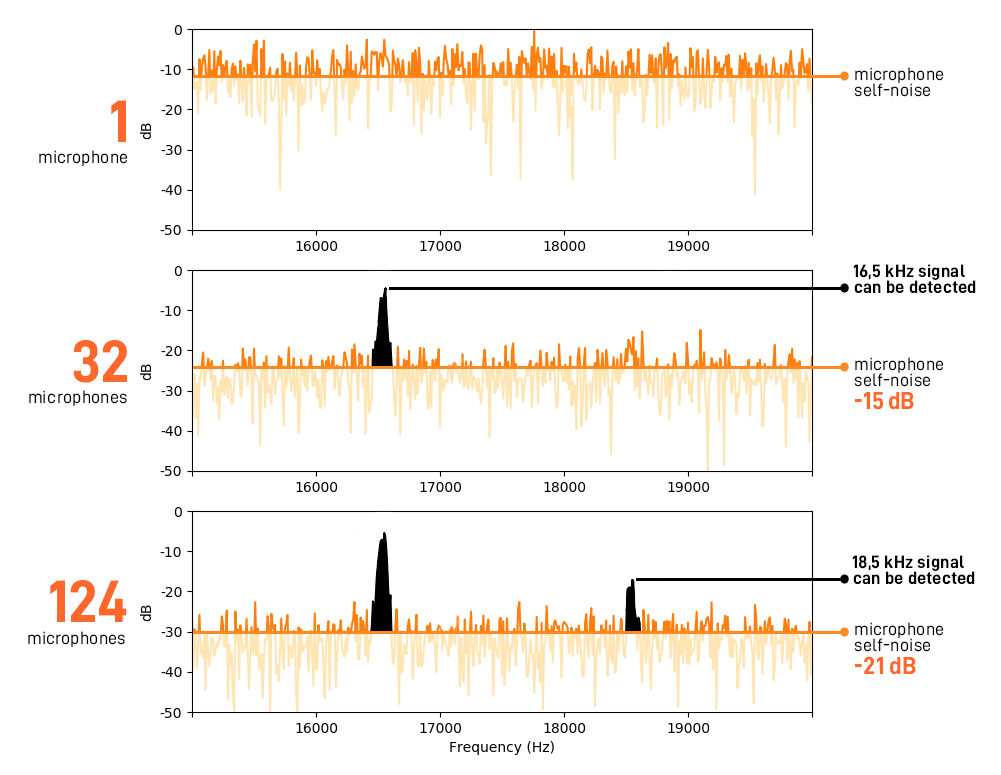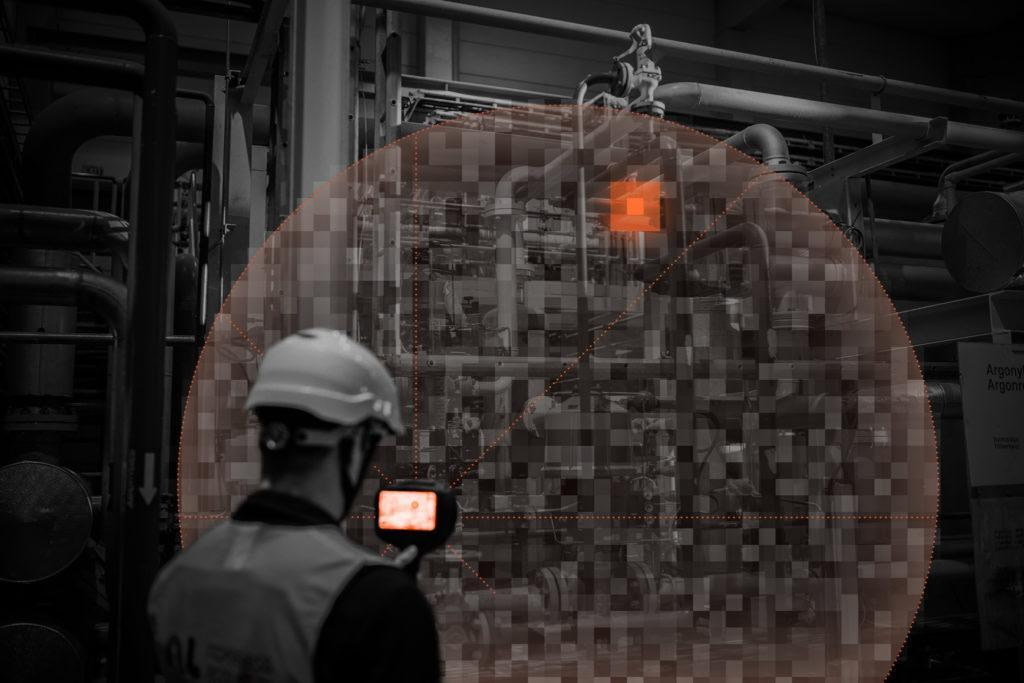When comparing the datasheets of different acoustic camera manufacturers, you quickly notice that the number of microphones varies a lot. In this article, we will explain the technology and science behind acoustic cameras and why having enough microphones really matters.
More Microphones—Better Acoustic Sensitivity
Bigger is not always better, but in acoustic imaging, having enough microphones plays a critical role. In general, increasing the number of microphones improves acoustical performance. Acoustic cameras generally use MEMS (microelectro–mechanical systems) type microphones, as they provide great performance, stability, low power consumption, and are small in size. MEMS microphones can typically pick up loud noises (usually over 120 dB(A)), but they also have a high self-noise level, which means that a single microphone cannot pick up the quietest sound levels. However, this self-noise can be attenuated by combining the signal from multiple microphones. Doubling the number of microphones removes roughly 3 dB of noise. Therefore, the sensitivity for detecting quiet sounds can be increased by maximizing the number of microphones.
By utilizing 124 state-of-the-art microphones, the NL Camera is able to locate air leaks as small as 0.016 l/min in optimal conditions. It is not possible to receive this level of accuracy with a lower number of microphones and without the NL Camera’s microphones that are market leaders in sensitivity.

Better Detection Range and Resolution
The number of microphones plays a critical role in detection range, another important, technical data sheet fact you should pay attention to. As sound travels through air, it is attenuated by 6 dB every time the distance is doubled. An increase in the number of microphones also increases the maximum detection range: the range is roughly doubled by quadrupling the number of microphones.
You might wonder why every manufacturer does not simply increase the number of microphones. It is easy to think that growing costs would be the only drawback. However, this is not true. Multiplying the number of microphones increases the number of audio data signals that need to be processed. This requires a lot of built-in processing power, which explains why portable acoustic cameras with an abundance of microphones have not been widely available earlier.
A quick way to decrease the required processing power would be to reduce the resolution of acoustic images. An acoustic camera essentially calculates the sound level arriving from numerous directions, acoustic image pixels, so decreasing the number of these pixels reduces the required processing power. However, acoustic image resolution is like that of your computer’s display—low resolution makes the image blurry. In a similar way, reducing the number of sound pixels hinders the performance of the device.

In contrast, increasing the number of sound pixels makes fault location more reliable and possible from longer distances. As the distance grows, so does the gap between the acoustic image pixels. If the number of available pixels is limited, it is difficult to determine the exact location of the sound source.
These factors as well as the portable, compact size of the device have been closely considered in the development process of the NL Camera. The NL Camera packs 124 microphones and a lot of processing power. This combination enables industry-leading detection sensitivity, excellent acoustic image resolution and a great range.
